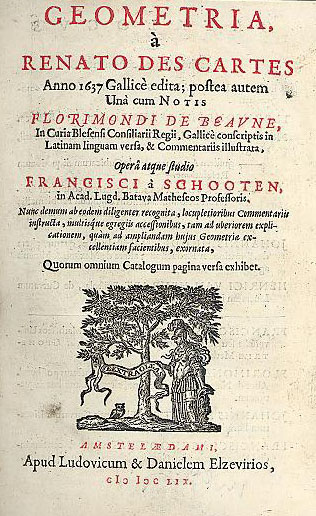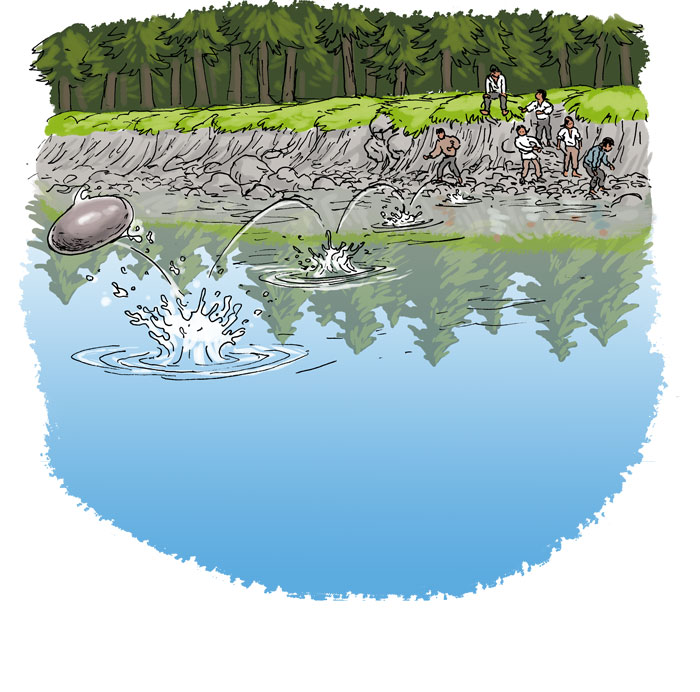Section 1.3 The Coordinate Plane and Graphs
With me, everything turns into mathematics.

Problem. How to connect geometry and algebra?
René Descartes: “Any problem in geometry can easily be reduced to such terms that a knowledge of the length of certain straight lines is sufficient for construction.”

Coordinate plane:
Example 1.3.1. City map.
A city map as a grid of streets and avenues:

The Coordinate plane in slow motion: See Figure 1.22 –. Figure 1.25.
Example 1.3.2. Locate points.
Locate on the coordinate plane the following points: \((0,0), \ (1.5,2), \ (-2, 2.5), \ (-1,-2.5), \ (1.5,-2), \ (2,0), \ (0,2), \ (-2,0), \ (0,-2)\text{.}\)
Must Know! The graph of a function \(f\) is the set of all ordered pairs \((x,f(x))\) as \(x\) varies over the domain of \(f\text{.}\)
The same, just a little bit different: The graph of a function \(f\) is the set
Example 1.3.3. Find a graph.
Find a graph of the function
Solution 1:
Graph of \(f=\{(-2,4),(-1,1),(0,0),(1,1),(2,4)\}\text{.}\)
Solution 2:
Graph of \(f\text{:}\)
Example 1.3.4. Graph of a piecewise defined function.
Graph the function
Which of these curves represents a graph of a function?
Which of these curves represents a graph of a function?
Example 1.3.5. Putting everything together.
Let the function \(f\) be given by its graph, as shown in Figure 1.31:
Find the domain of \(f\text{.}\)
Find the range of \(f\text{.}\)
Find \(f(-1)\text{,}\) \(f(1)\text{,}\) and \(f(3)\text{.}\)
Estimate \(f(0)\) and \(f(2)\text{.}\)
How many solutions does the equation \(f(x)=1\) have?
We use Figure 1.32 to answer all questions.
Domain of \(f=\color{red}{[-1,2.7]}\text{.}\)
Range of \(f=\color{blue}{[-1.6,2.6]}\text{.}\)
We read from the graph that \(f(-1)=f(1)=0\text{,}\) and that \(f(3)\) is not defined.
We use the graph to estimate \(f(0)\approx 2.5\) and \(f(2)\approx -1.5\text{.}\)
Observe that the line \(y=1\) intersects the graph of the function \(f\) at three points. This implies that the equation \(f(x)=1\) has three solutions
